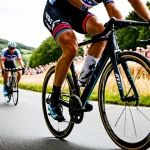Current Popular Trends in UK Football Fan Merchandise
Explore what’s hot among fans today
The UK football fan merchandise trends are currently shaped by a distinct surge in jersey and kit sales. Fans are eager to show support through official kits, especially when clubs unveil new home and away jerseys. These releases often trigger spikes in demand, as supporters seek the latest designs featuring updated colors, badges, and sponsor logos.
Also to read : How does UK football culture influence fashion trends?
Alongside apparel, there’s a notable growth in the collectibles and memorabilia market. Items like signed balls, limited-edition scarves, and framed photographs have become increasingly popular among dedicated collectors. These trending products tap into fans’ desire to own exclusive pieces—adding both sentimental and investment value.
High-profile club releases and collaborations amplify these trends. Partnerships with major sportswear brands or celebrities introduce fresh designs and unique merchandise lines that captivate fans. For example, limited collaboration kits often become instant bestsellers due to their rarity and style.
Also to discover : What role does grassroots football play in UK communities?
Understanding these evolving trending products helps fans make informed choices, whether seeking the newest kits or coveted memorabilia. This dynamic market continuously offers exciting options aligned with passion and authenticity at its core.
Emerging and Niche Product Trends
Sustainability is reshaping the football merchandise landscape. Eco-friendly football merchandise is gaining traction as fans seek products made from recycled or organic materials. This shift reflects a growing environmental awareness, with manufacturers adopting greener production methods to reduce waste and carbon footprints. Eco-conscious supporters now have a variety of options, from jerseys crafted with sustainable fabrics to accessories packaged in biodegradable materials.
Alongside sustainability, there’s a renewed interest in retro football kits. Vintage-inspired designs attract both nostalgic fans and younger audiences who appreciate classic aesthetics. These kits often emulate iconic styles from past decades, combining modern fabric technology with timeless visuals, making them highly desirable collectors’ items.
Football brands are also exploring innovative football products that blend fashion and functionality. Limited edition releases and unique collaborations—sometimes with artists or designers outside the sports realm—create exclusivity and buzz. These innovative products push boundaries, offering fans a fresh way to engage with their favorite sport while standing out in a crowded market.
Fan Purchasing Behaviors and Influences
Understanding what drives UK football fans to buy merchandise
UK football fan purchasing trends show a clear preference for official merchandise, valued for authenticity and supporting clubs directly. However, there is a noticeable segment that opts for unofficial items, often attracted by lower prices or unique, fan-made designs. This split reveals how merchandise buying habits can be influenced by both loyalty and budget considerations.
Social media and influencer culture now play a crucial role in shaping what fans buy. Celebrity endorsements and player partnerships amplify visibility and desirability of specific products. Fans often mirror influencers’ choices, driving demand beyond the traditional club stores.
The rise of digital marketplaces has transformed buying behaviors. Platforms dedicated to fan engagement enable real-time access to limited-edition releases and personalized items. This accessibility encourages impulse purchases and strengthens fan identity through visible, branded merchandise. Overall, what fans buy is increasingly tailored by a mix of personal taste, social influence, and the convenience of digital shopping environments.
Online vs. In-Store Sales Developments
Examining changing consumer habits and digital retail in football
The growth in football merchandise online sales has accelerated significantly, driven by enhanced club-run platforms offering exclusive gear and seamless shopping experiences. Fans increasingly prefer browsing and purchasing football merchandise online sales, attracted by convenience and broader product ranges than typically found in physical stores.
Despite this, in-store shopping trends continue to hold value, especially for fans who enjoy the tactile experience of examining merchandise before buying. Physical retail stores at stadiums and club shops foster emotional connections, allowing fans to immerse themselves in the football culture firsthand. This interaction remains a critical component of traditional retail.
When comparing consumer habits, digital retail in football appeals more to younger audiences who prioritize speed and ease of access. By contrast, older fans tend to favor in-store purchases for authenticity and social interaction. Both channels currently coexist, catering to distinct preferences but increasingly integrating: online platforms now often feature click-and-collect options, blending digital retail in football with physical convenience.
Ultimately, the football retail landscape reflects a dual approach where football merchandise online sales grow dynamically alongside sustained in-store engagement, ensuring fans can access products in ways that suit their lifestyles.
Club-Specific Merchandise Trends
An exploration of how football clubs tailor their products to fans
Football clubs increasingly capitalize on club-specific merchandise to boost fan engagement and revenue. The trend of tailoring club-focused fan products appeals directly to supporters’ loyalty, making items more than just memorabilia—they become symbols of identity.
Top UK club merchandise strategies often feature limited editions or seasonal releases tied to significant events, like anniversaries or key victories. For example, clubs that launch exclusive kits or commemorative scarves see spikes in sales driven by the urgency and exclusivity of these products. This exclusivity fosters a closer fan-club bond, encouraging repeat purchases.
Regional loyalty also heavily influences product demand. Fans gravitate towards merchandise reflecting their club’s local heritage, incorporating regional colors, emblems, or nicknames. This trend enhances authenticity, making football club fan trends not only about the sport but also about community pride.
Successful clubs monitor these trends carefully, using social media and fan feedback to refine their offerings. By focusing on club-specific merchandise, clubs can create emotionally resonant products that resonate widely, sustaining demand in a competitive market.
Data, Statistics, and Visual Examples
Delving into UK football merchandise statistics reveals key trends shaping fan purchases. Recent sales figures indicate that club jerseys remain at the forefront, consistently topping demand charts. Brands like Nike and Adidas, linked to major clubs, significantly drive these numbers, with a notable spike during transfer windows and tournament seasons.
Fan merchandise data shows a growing appetite for personalized items, such as name and number prints on kits, boosting revenue streams. Scarves and hats often see seasonal surges, especially in colder months, reflecting their practicality alongside fan pride.
Visual examples frequently highlight trending products, with classic retro kits making a surprising comeback, appealing to nostalgia-driven buyers. Additionally, eco-friendly materials are increasingly featured, a trend aligned with broader consumer consciousness.
Data-driven insights underscore event-specific boosts: FA Cup finals and local derbies spike sales across product categories, suggesting timing marketing efforts and stock accordingly for peak performance. Graphs tracking quarterly revenue often depict sharp increases coinciding with these football events.
These statistics provide crucial guidance for retailers and marketers alike. Understanding such detailed fan merchandise data enables targeted strategies that capitalize on both everyday demand and seasonal shifts, amplifying engagement and sales in the competitive football merchandise market.

